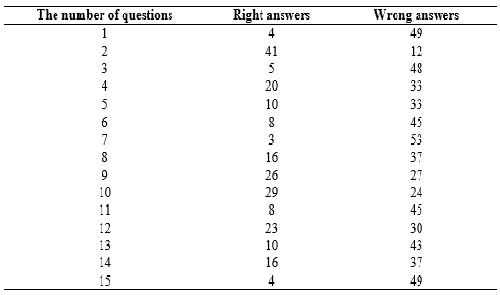
Investigating Mother Tongue Effect In The Acquisition Of English Prepositions By Indonesia-Speaking Learners
Abstract
Keywords
Full Text:
PDFReferences
Abdalla, I. (2021). Difficulties in using correct English prepositions among EFL students. JEES (Journal of English Educators Society), 6(2).
AlQbailat, N. M., Al-Momani, I. M., & Almahameed, Y. S. (2016). Prepositions in use: Prepositions of standard, prepositions of possession and prepositions of accompaniment. Advances in Language and Literary Studies, 7(4), 1-6.
Bagherian, A. (2012). EFL learners’ L1 conceptual transfer and its relation to their language proficiency and age. International Journal of Applied Linguistics and English Literature, 1(4), 152-160.
Ballard, K. (2022). The frameworks of English: introducing language structures. Bloomsbury Publishing.
Bestgen, Y., Granger, S., & Thewissen, J. (2012). Error patterns and automatic L1 identification. Approaching language transfer through text classification, 127-153.
Biria, R., & Ameri-Golestan, A. (2010). The Impact of Syntactic Priming on English Language Learners' Production: A Transfer Study of Indirect Questions/Requests. Journal of Language Teaching & Research, 1(5).
Boers, F., & Lindstromberg, S. (2012). Experimental and intervention studies on formulaic sequences in a second language. Annual Review of Applied Linguistics, 32, 83-110.
Bu, J. (2012). A Study of Relationships between L1 Pragmatic Transfer and L2 Proficiency. English Language Teaching, 5(1), 32-43.
Chávez-Peón, M. E., Bernhardt, B. M., Adler-Bock, M., Avila, C., Carballo, G., Fresneda, D., ... & Stemberger, J. P. (2012). A Spanish pilot investigation for a crosslinguistic study in protracted phonological development. Clinical linguistics & phonetics, 26(3), 255-272.
Charters, H., Dao, L., & Jansen, L. (2012). Think of a number: conceptual transfer in the second language acquisition of English plural-marking. CogniTextes. Revue de l’Association française de linguistique cognitive, (Volume 8).
Cuyckens, H., & Radden, G. (Eds.). (2002). Perspectives on prepositions. Tübingen: Niemeyer.
Đorđević, M. (2013). Typical difficulties with English prepositions for Serbian learners. Civitas, 3(05), 24-34.
Estling Vannestål, M. (2007). A university grammar of English: with aSwedish perspective.
Gass, S. M., & Selinker, L. (Eds.). (1992). Language transfer in language learning: Revised edition (Vol. 5). John Benjamins Publishing.
Günther, C. (2021). Preposition Stranding vs. Pied-Piping—The Role of Cognitive Complexity in Grammatical Variation. Languages, 6(2), 89.
Gvarishvili, Z. (2013). Interference of L1 prepositional knowledge in acquiring of prepositional usage in English. Procedia-Social and Behavioral Sciences, 70, 1565-1573.
Huu, P. T., Tat, T. N., & Tin, N. T. (2019). A cognitive study of nonlinguistic factors affecting the use of prepositions by Vietnamese native speakers. International Journal of Applied Linguistics and English Literature, 8(1), 147-158.
Jarvis, P. (2007). Globalization, lifelong learning and the learning society: Sociological perspectives. Routledge.
Macková, B. L. (2012). A Contrastive Analysis of the Prepositions “To” and “Into”. Master's Diploma Thesis.
Meyerhoff, M. (2009). Replication, transfer, and calquing: Using variation as a tool in the study of language contact. Language Variation and Change, 21(3), 297-317.
Muskat-Tabakowska, E. (2010). The story of ZA: in defense of the radial category. Studies in Polish Linguistics, 5(1).
Nacey, S., & Graedler, A. L. (2015). Preposition use in oral and written learner language. Bergen Language and Linguistics Studies, 6.
Nghi, T. T., Thang, N. T., & Phuc, T. H. (2021). An Investigation into Factors Affecting the Use of English Prepositions by Vietnamese Learners of English. International Journal of Higher Education, 10(1), 24-40.
Odlin, T. (2005). Crosslinguistic influence and conceptual transfer: What are the concepts?. Annual review of applied linguistics, 25, 3-25.
Omar, J. A. (2018). Kurdish EFL learners’ conceptual transfer in L+ writing. The Journal of Education, Culture, and Society, 9(1), 163-172.
Özbay, A. Ş., & Bozkurt, S. (2017). Tertiary Level EFL Learners’ Use of Complex Prepositions in KTUCLE, TICLE versus LOCNESS. International Journal of Educational Researchers, 8(3), 32-41.
Phoocharoensil, S. (2013). Cross-Linguistic Influence: Its Impact on L2 English Collocation Production. English Language Teaching, 6(1), 1-10.
Quirk, R. (2010). A comprehensive grammar of the English language. Pearson Education India.
Rankin, T., & Schiftner, B. (2011). Marginal prepositions in learner English: Applying local corpus data. International Journal of Corpus Linguistics, 16(3), 412-434.
Ruangjaroon, S. (2015). Perception and Production of Thai Learners onEnglish Prepositions. English Language Teaching, 8(1), 71-82.
Sagarra, N., & Ellis, N. C. (2013). From seeing adverbs to seeing verbal morphology: Language experience and adult acquisition of L2 tense. Studies in Second Language Acquisition, 35(2), 261-290.
Silverman, D. (2015). Interpreting qualitative data. Sage.
Schneider, N., Hwang, J. D., Srikumar, V., Green, M., Suresh, A., Conger, K., ... & Palmer, M. (2016, August). A corpus of preposition supersenses. In Proceedings of the 10th Linguistic Annotation Workshop held in conjunction with ACL 2016 (LAW-X 2016) (pp. 99-109).
Talebi, S. H. (2014). Cross-linguistic transfer among Iranian learners of English as a foreign language. Issues in Educational research, 24(2), 212-227.
Talmy, L. (2000). Toward a cognitive semantics (Vol. 2). MIT press.
Tyler, A. (2012). Cognitive linguistics and second language learning: Theoretical basics and experimental evidence. Routledge
Wijaya, D., & Ong, G. (2018). Applying Cognitive Linguistics to teaching English prepositions in the EFL classroom. Indonesian Journal of Applied Linguistics, 8(1), 1-10.
Xiao, W., Wang, M., Zhang, C., Tan, Y., & Chen, Z. (2018, September). Automatic generation of multiple-choice items for prepositions based on word2vec. In International conference of pioneeringcomputer scientists, engineers and educators (pp. 81-95). Springer, Singapore.
Yuan, H. C. (2014). A corpus-based study on the influence of L1 on EFL learners' use of prepositions. Theory and Practice in Language Studies, 4(12), 2513.
DOI: http://dx.doi.org/10.31258/jes.7.1.p.95-109
Refbacks
- There are currently no refbacks.
Copyright (c) 2023 agus budiharto, Dian Rokhmawati

This work is licensed under a Creative Commons Attribution 4.0 International License.
Publisher: FKIP Universitas Riau












